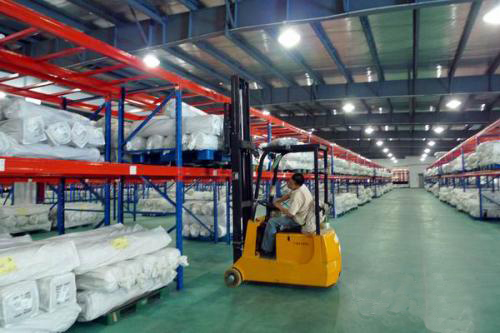
RFID provides high-quality supply chain services for textiles
[ad_1]
Warehouse management is an important core part of the production and operation management of textile enterprises. How to strengthen warehouse management, reduce enterprise production costs, and enhance enterprise competitiveness has always been a concern. Through the use of RFID technology, the problem can be summarized as an important technical point in production, inventory planning and daily management. According to the characteristics of the product, optimize the management and control link indicators, establish a reasonable production inventory model, and optimize the informationized inventory. RFID provides high-quality supply chain services for textiles.
With the rise of fast-fashion consumer goods, the textile industry’s orders gradually show the characteristics of “small batches, multiple batches, and multiple SKUs”, and the order cycle is constantly shortening to ensure a quick response to user needs. The long textile industry chain, high raw material procurement costs, and serious product homogeneity have restricted the development of the textile industry and affected the further expansion of the textile market. How textile enterprises should innovate their development models and break through the textile dilemma is a question that every textile company is actively exploring.

Among them, the textile industry solution uses a combination of multiple information technologies to realize the in-depth integration of the Internet and the textile industry, improve the efficiency of textile circulation, realize the effective allocation of textile resources, and help enterprises build an intelligent, efficient and transparent textile supply chain. Achieved the cost reduction, quality improvement and efficiency improvement in the textile link.
Implementation of warehouse management in RFID textile industry:
1. Warehouse and distribution integration
Through the application of WMS+TMS, effectively integrate logistics and warehousing resources, build a nationwide integrated warehouse and distribution network, provide customers with end-to-end supply chain services, realize the efficient circulation of textile fabrics, avoid layer-by-layer price increases, and improve downstream garment manufacturing Supplier’s purchasing experience.
2. Supply chain finance
In addition to optimizing the logistics and warehousing links, Raids Information also provides supply chain financial services. By building a supply chain financial platform, attracting banks, high-quality investors, textile companies, etc., to provide financing services for members of the textile supply chain, lowering the threshold of corporate financing, preventing and controlling corporate financing risks, and encouraging companies to obtain safe financing.
3. Mass data precipitation
Relying on big data technology, realize the collection and cleaning of textile industry data through the data financial platform, and precipitate effective data from it, provide data support for the optimization of the production and procurement links of textile enterprises, and help enterprises realize the unified procurement of raw materials and the intelligence of production orders distribute.
When shipping the warehouse, use RFID reading and writing equipment to quickly scan the goods, check the scanning results and the shipping notice, generate and print the shipping list of each box of goods, or the batch of shipping lists, and record each in the database RFID electronic tag related goods delivery time, goods destination, agent number and other commodity attributes and commodity flow information. Realize the full-life tracking of commodities and the standardization of clothing logistics operations, shorten the operation process and operation time, and reduce labor costs.
One of the most important tasks in the textile industry warehouse is to ensure that the book quantity is consistent with the actual quantity. When the warehouse picks goods or the store counts, the RFID inventory equipment can be used to quickly pick the target goods according to the order to avoid wrong picking and missed inspections, and achieve data Automatic collection and efficient inventory. Using RFID technology to overcome the large number of warehouses and the time-consuming defect of inventory, complete inventory easily and quickly, simple and easy to learn, can easily achieve the accuracy of commodity receipt records and the automation of delivery and distribution, so that inventory will not be counted. Omissions and losses.
[ad_2]



